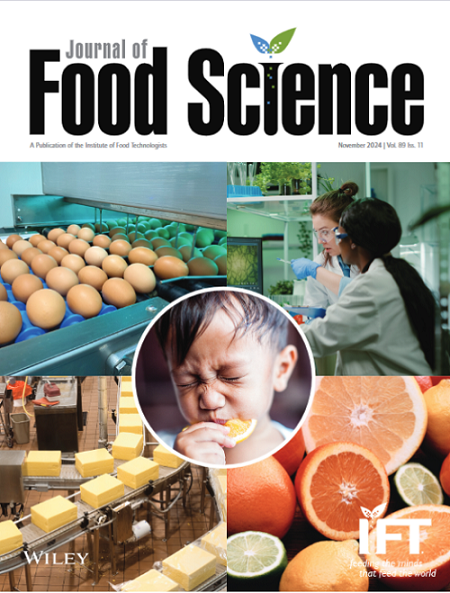Pectin/gelatin-based bionanocomposite containing modified graphene quantum dots and carnauba wax as functional fillers for food packaging applications
Abstract
Alternatives to nonbiodegradable synthetic plastics for food packaging include films made from biopolymers that are nontoxic and environment-friendly. In this study, carnauba wax (CW) and nitrogen-doped graphene quantum dots (NG) as functional additives were utilized in the production of pectin/gelatin (PG) film. NG was synthesized through the microwave method, using acetic acid as the carbon source, giving size, and zeta potential of 1.635 nm and +0.647 mV, respectively. NG (0%–10%) and CW (0%–10%) were investigated for nanocomposite film preparation using central composite design. The lowest water vapor permeability of film samples was 1.74 × 10−10 g mm/h m2 kPa, which was obtained at 8.5% CW and 6% NG. The highest solubility rate (57%) was observed in the PG film with 10% NG. The incorporation of NG significantly amplified light absorbance at 280 nm. The antioxidant properties improved as NG content increased from 1.5% to 10%. Optimum condition for the fabrication of film sample was obtained at 8.5% NG and 8.5% CW. Adding NG led to a substantial enhancement in the tensile strength (up to 68.97%) and elongation at break (up to 40.20%). PG film with CW and NG reduced the viable cell count of Staphylococcus aureus and Klebsiella pneumoniae by 4- and 1.75-fold, respectively. The produced composite film combined with NG and CW can serve as suitable novel active packaging components for items prone to oxidation and bacterial spoilage to enhance their quality and longevity.

 求助内容:
求助内容: 应助结果提醒方式:
应助结果提醒方式:


